How to properly grow and care for the tsifomandra tomato tree
Tsifomandra belongs to the nightshade family. She has thin, slightly pubescent leaves, shaped like a heart. Their length can be up to ten centimeters. White-pink or white-blue flowers strongly resemble flowers potatoes... They are collected in large inflorescences of about forty flowers each.
The fruit is a two-chambered plum-like berry with a fairly dense skin, it weighs about thirty grams. The taste may not please everyone. Fruits are small, often orange and yellow-orange in color, red and dark red come across. Most likely, in a few years, with the help of selection, species with larger fruits will be created. After all, ordinary tomatoes also did not immediately conquer the gardens of summer residents.
Content:
- How to grow a cyphermander at home?
- Tomato tree care
- Reproduction of the cypher
- How to grow a tree outdoors?
How to grow a cyphermander at home?
Tsifomandra is called tamarillo in another way. It is perennial and evergreen wood... Its seeds are very small, even tiny, resemble seeds physalis... Incredibly, such babies grow plants that reach a height of two meters. Now the tomato tree is considered more of an ornamental plant. the main advantage of tamarillo is its resistance to diseases and pests, low temperatures. When the branches are damaged by cold, new ones grow very quickly in adult plants, so they easily tolerate small frosts.
If you have already grown tomato, eggplant or peppers, then you will not be difficult to grow a tomato tree, since all of the above plants also belong to the nightshade family. A very common mistake: gardeners choose too deep a pot for the plant, focusing on the high height of the tree.
The container should be shallow but wide, as the roots will be close to the surface.
Be sure to buy a deep pan and make drainage holes. They will provide the right amount of air and water for the roots. The best thing to water the plant is in the pallet. Make sure that the water does not stagnate, as tamarillo can die, especially watch out for young trees. If the plant is grown from seed, then the first year you do not need to let it bloom. Rinse the freshly harvested seeds, dry them and let them lie in the refrigerator for 24 hours so that they germinate faster. Fresh seeds give a small sprout on the fourth day.
Tomato tree care
What should be the soil for a tree:
- The soil mixture must be prepared in such a way that it is light in composition, but at the same time fertile enough.
- You can use liquid fertilizers, which are fed to ordinary tomatoes, or, in addition to them, a prolonged fertilizer action can be used - a variety of granules and sticks.
- Mandatory is mulching soil with finely crushed expanded clay. Expanded clay can be replaced with large pieces of sphagnum moss.
The importance of solar lighting for a tomato tree can hardly be overestimated, so you can put it either on the windowsill on the south side of the apartment, or on the southeast loggia or balcony. In winter, be sure to turn on the backlight. Without it, the plant will lose some of its foliage and ovaries. Insulate the balcony or loggia well.
The tomato tree will not withstand prolonged frosts, try to maintain the temperature at least about fifteen degrees.
It is believed by many that a tree can grow without damage to fruiting for up to six years, but it is still better to grow no more than three.
Reproduction of the cypher
The varieties that you especially like can be propagated from green cuttings. Already in the first year after such reproduction, you can harvest and even take out a tomato tree for a while in a greenhouse or garden. After fruiting, many gardeners destroy most of the plants.
For growing from cuttings, one-year or two-year branches no more than a centimeter in thickness and no more than forty-five centimeters in length are suitable.
Cuttings help to grow a bushy, but compact plant, its branches are low, and varietal characteristics with this method are preserved much better. Even in plain boiled water, they will root perfectly.
How to grow a tree outdoors?
There is another tomato tree - Octopus... One bush can produce up to ten kilograms of fruit. It is definitely better to grow tomato in a greenhouse, but you can also try it outdoors. Care for this hybrid "the old fashioned way" as you care for conventional tomatoesand you won't notice any difference in yield.
There are several extremely important aspects, observing which, you can try to grow a tomato tree in one season:
- The first thing to consider is that the seeds are on seedlings you need to sow a little earlier than standard tomatoes in a spacious container, and also provide additional lighting in the dark.
- In order for additional roots to form faster, and the plant itself to grow more actively, you can pinch the main root when planting.
- Too often, it is not necessary to plant seedlings in the ground, since the root system of a tomato tree can grow up to three and a half meters.
- Do not plant sprouts too close to each other in the ground, a tomato tree is a strong, spreading plant, sometimes it grows up to three and a half meters. Plants are planted according to a specific system: 30x50x130 centimeters. Are you planting thicker? Increase your row spacings! Think in advance about a long trellis. If you have not taken care of such an important thing, then at least drive a two-meter stake under each bush. Soon the trees will be huge and will have to be tied up.
- This variety does not need to be pinned. This rule should be followed unquestioningly, it is very little to care for the shoots.
- The tomato tree hybrid is very, very gluttonous. Prepare to feed the plant very actively. A big bucket of compost for him is like a piece of sausage for us. It should be fed directly at the root.
- Do thorough disease prevention.
- Diligently remove old yellow leaves at the bottom. The bushes bared from the bottom ventilate better, which means they get sick less and they bring more harvest. You can begin to pick off the leaves after the appearance of pink fruits on the first cluster.
- When the fruits begin to ripen on the second brush, on the first all the leaves should have already been removed. One of the reasons why the ovaries are bad is the lack of lighting due to the excess foliage on the plant.
More information can be found in the video.



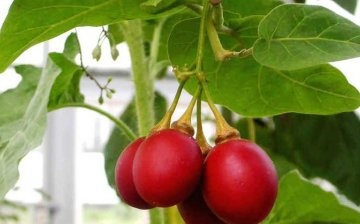
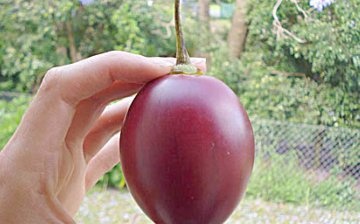
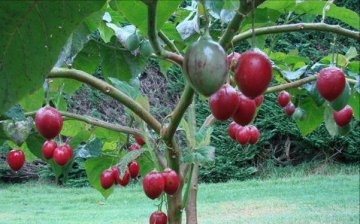
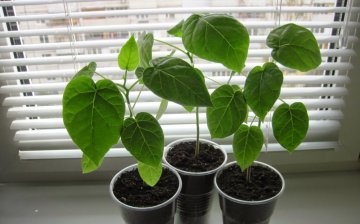
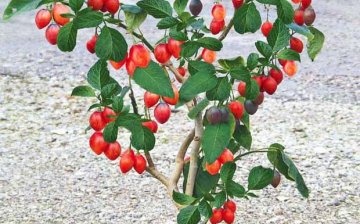





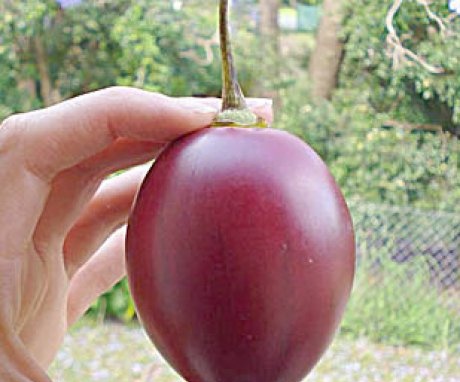
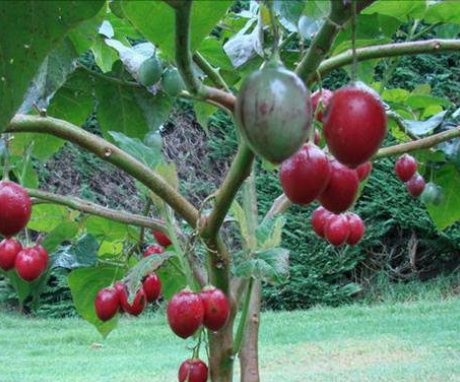
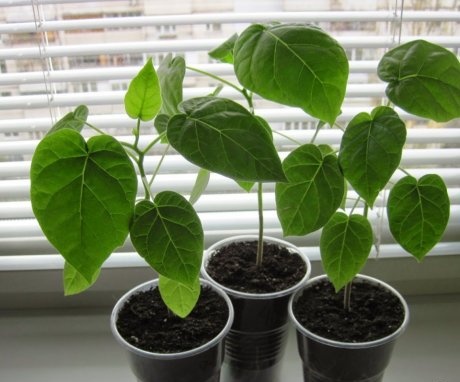
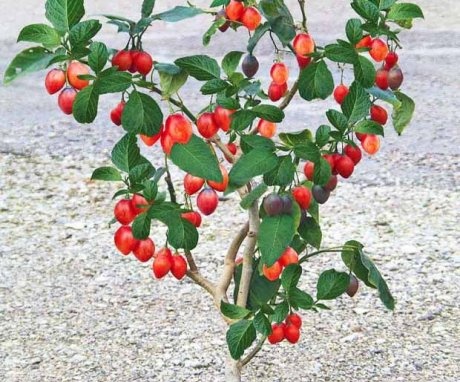
I saw this tree more than once in the plots, but only in the southern regions of our Motherland. The question arose, is it really possible to grow it and fully (what would give fruit) in conditions of middle latitude? In the suburbs, in particular?